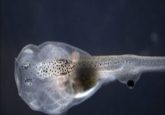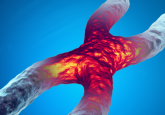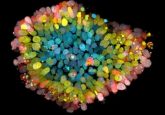Naked mole rat and its secret to longevity

Naked mole rat is known for a long life that is free from age-related disease. What is the secret? A new study provides some clues.

Naked mole rats can live more than thirty years, which is remarkably long for a rodent. They also maintain good health, cardiac function, and resistance to cancer well into old age. How do they age so well? A team of researchers from several institutions examined this question and now report their findings in PNAS.
Cellular senescence is a permanent arrest of the cell cycle in response to stresses such as DNA damage or telomere shortening (replicative senescence). While senescence can help prevent cells from becoming cancerous, over time, it can damage tissue integrity, leading to age-related diseases. Since it also plays an important role in tissue remodeling during development, Vera Gorbunova of the University of Rochester and her colleagues examined several tissues from newborn naked mole rats, including hair follicles, and observed expression of senescent markers. “Perhaps this explains why they are naked!” she joked.
Next, the team compared primary cells from naked mole rats and mice for markers of cellular senescence in response to gamma-radiation and oncogene expression; they found that cells from both species exhibited senescence markers, inflammatory cytokines, and reduced DNA synthesis indicative of cell cycle arrest. Interestingly however, they observed that apoptosis increased upon irradiation of mouse cells but not naked mole rat cells, which led them to compare gene expression profiles of cells from the two species under these conditions.
From this analysis, the researchers confirmed that apoptotic genes are expressed at lower levels in naked mole rats than they are in mouse cells. They also observed that naked mole rats reduce expression of transcription and mitochondrial translation pathways while they express genes associated with the lysosome, extracellular matrix, and response to reactive oxygen species at higher levels when compared with mice.
Gorbunova thinks that these changes reflect intrinsic differences in naked mole rat cellular physiology during senescence. “Mice respond to stress more by apoptosis, whereas naked mole rats may use autophagy and the lysosome to repair cells. Also, the cells are more metabolically silent,” she said. “I think mice use a different strategy because they are short-lived. Naked mole rats, like humans, have a longer life span, so they are a very important model for human health.”





